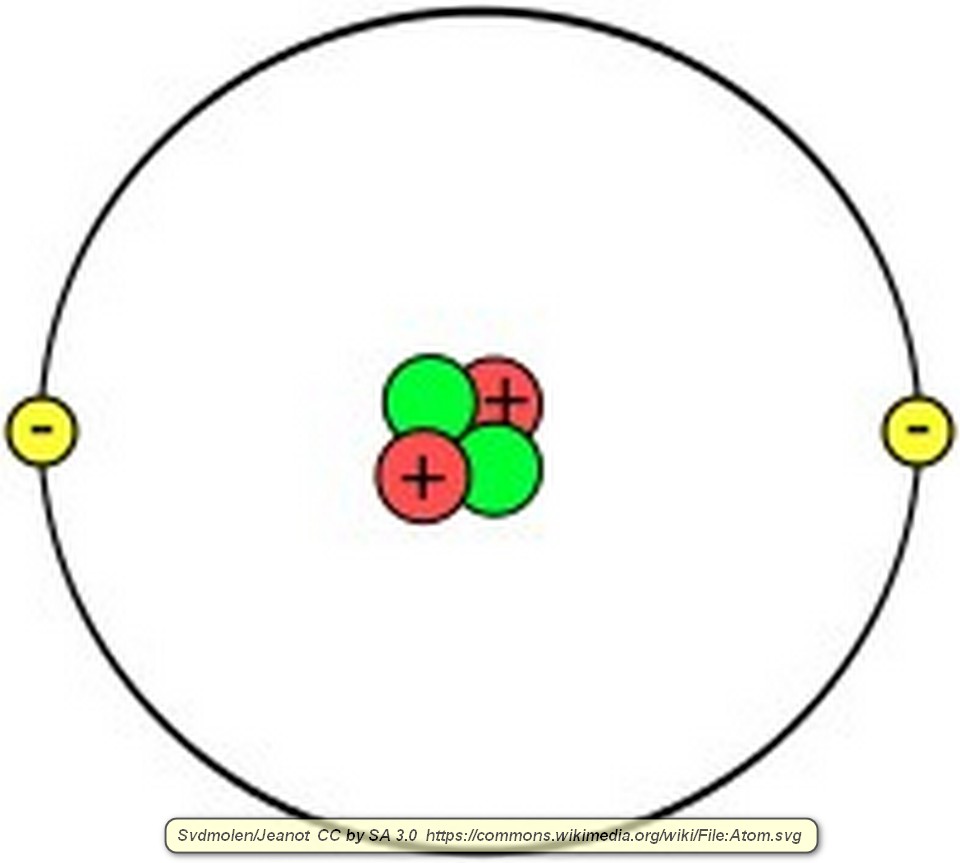
Antimatter is not just something out of the realm of science fiction and Star Trek. It exists and has been measured. But what is antimatter?
Defining Antimatter

Put as simply as possible, antimatter is a substance that has some opposite qualities of regular matter.
To explain this more fully, atoms make up everything we see and feel. Just as water is made of hydrogen and oxygen atoms, so it is with every other substance. They are all made up of atoms.
The atoms, in turn, are made up of electrons, protons, and neutrons. Electrons each have a single negative charge, protons have a single positive charge, and neutrons have no charge at all.
Observed Antimatter

The first antimatter particle discovered was the positron or anti-electron. A positron has exactly the same mass as an electron, but it has a single positive charge. Using particle accelerators that slam particles together at near light speeds scientists produced the first observed anti-proton, though it lasted far less than a second. It had the same mass as a proton but had a single negative charge.
Anti-neutrons have also been observed, but since they have no charge, it isn’t the difference in charge that distinguishes the particle. Instead, it is the spin that makes it an anti-neutron. All neutrons possess a certain spin. Anti-neutrons, while having the same mass, have an opposite spin.
Matter plus antimatter

An interesting aspect of antimatter is that when antimatter comes in contact with identical matter, there is a total inhalation of both. In essence, they cancel each other out. So an electron making contact with a positron will destroy both the electron and the positron, releasing a great deal of energy. To understand how this is possible, we need to look at Einstein’s law of relativity.
Before doing that, though, we should look at Isaac Newton’s law of Conservation of Energy. This states that energy can neither be created nor destroyed, it can only be altered. For instance, if you rub your hands together, you feel the heat from the friction. This is a conversion of energy in your muscles to move your hands, into heat from the friction. Nothing has been created or destroyed.
Einstein’s law went a step further and tells us that matter and energy are the same, they are just different sides of the same coin. By this law, energy is equal to mass [of a quantity of matter] times the speed of light, squared. That number is enormous, and it is the basis of atomic power, as we know it today.
The thing is that atomic power is less than 20% efficient, meaning that most of the power created can’t be used. For comparison, though, a light bulb is less than 1% efficient, most of the rest of the energy being converted to heat rather than light. (The same is true in a nuclear reactor.)
However, since matter and antimatter totally destroy one another on contact, there is 100% energy conversion efficiency. Put in another way, if we could figure out how to combine 1 gram of water and 1 gram of anti-water, and harness all the resultant energy, we could produce enough energy in that one exchange to power the electrical needs of the people of this planet for the next thousand years!
Scientists are working feverishly to try to figure out a way to do this. The obstacles are many and great, such as how to produce the anti-water to begin with, and how to contain it without causing a detonation prematurely. There is also the issue of containing all of the resulting energy. Still, the rewards are clearly worth the effort.
In any event, antimatter is a fascinating substance that is nowhere near being fiction. We know it exists, and probably in great quantities naturally. The question is; so now what?




Did you see the recent article about how scientists at CERN have decided that the universe shouldn’t exist? Since matter and anti-matter destroy each other, it was believed that there had to be asymmetry: there had to be more matter than anti-matter. However, all the evidence from the super collider says that this is not the case. The amount of matter and anti-matter are the same. I’d propose a third state to rectify this situation: doesn’t-matter.
I’ve heard something along those lines, yes. Some astronomers have even suggested that many of the galaxy (possibly half of them?) are actually antimatter galaxies. It would be exceptionally hard to tell at such great distances since the photons emitted by the stars would probably be indistinguishable, whether they came from a matter star or an anti-matter one. Your proposal could indeed be correct, too. It could be the ‘missing’ dark matter that theory says *must* exist. Since we haven’t actually detected dark matter, we have no clue what its properties might be, so it could somehow keep matter and antimatter apart, without necessarily having the properties of either.
I’m skeptical about “dark” anything. It strikes me as a kludge. Scientists are always going on about how they are only interested in what they can observe and measure until they need something that can neither be observed or measured to make their pet theory work.
You have a point. Then again, it is all but proven that black holes exist, yet we can’t see them or directly measure them. Evidence for dark matter is indirect and circumstantial, just as it is for black holes, but in a different way.
This antimatter was featured in a book of Dan Brown I think..it’s the Angels and Demons…and CERN in Switzerland is studying this phenomenal antimatter…Good job for this blog about antimatter Rex…Deserves my upvote!
I’ll admit that I haven’t read Dan Brown’s book. Several scientists have written about it, though. Even Sir Dr. Steven Hawking has written about it, I believe. If I’m not mistaken, he has hypothesized that with large masses, like galaxy and anti-galaxy, the explosion and release of energy could cause a rift in space-time, similar to that of a black hole.
Yeah it’s even featured in Marvel comics and introduced as dark matter…antimatter really exists 🙂
Really great explanation of anti-matter. We need to find the answer to this question about how to use more of the energy that we produce. Anti matter might be the answer.
I agree. It will no doubt be far more dangerous than nuclear power, but the potential benefit is far greater, too. All the energy needs for the planet met by a tiny amount of material…I can’t even imagine the inventions that could be possible with unlimited power.